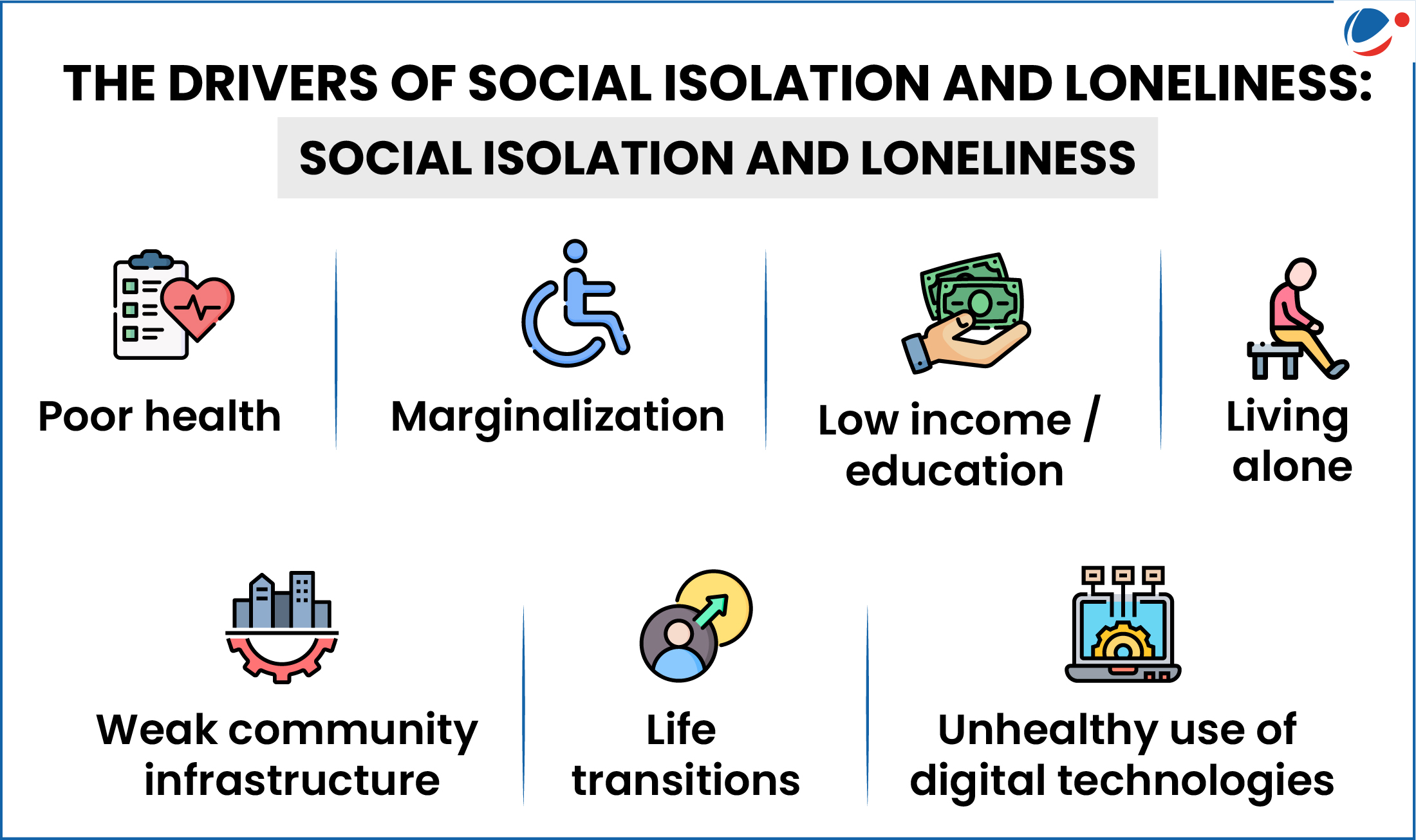This report by the WHO (World Health Organisation) Commission on Social Connection highlights the impact of social isolation and loneliness on health, well-being, and society.
What is Social Connection and Disconnection?

- Social connection is about the many ways we relate to and interact with others and it includes family, friends, classmates, coworkers, neighbours.
- Social disconnection occurs when a person doesn’t have enough social contact, doesn’t feel supported by the relationships, or have strained or negative relationships. Forms of social disconnection includes:
- Loneliness (discrepancy between one’s desired and actual experiences of connection) and
- Social Isolation (having very few relationships or not seeing people often enough).
Key Highlights of Report
- Widespread Social Disconnection: About 1 in 6 people feel lonely (2014–2023) with young people (ages 13-29) feeling the loneliest.
- Up to 1 in 3 older adults (between 1990-2022) while about 1 in 4 teenagers (between 2003-2018) are socially isolated.
- Disparities: In low-income countries, about 24% of people feel lonely while in richer countries, 11% feel lonely.
- Impacts of Social Disconnection: Physical Health (about 871,000 global deaths (2014–2019) linked to loneliness), Mental Health (Depression, Anxiety, Dementia etc.), Socio-Economic (Poor Academic Performance and Productivity Loss).
Roadmap for Improving Social Connection
|



